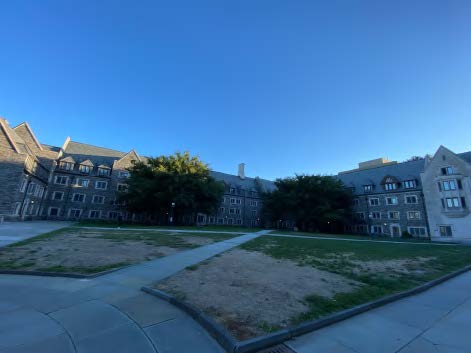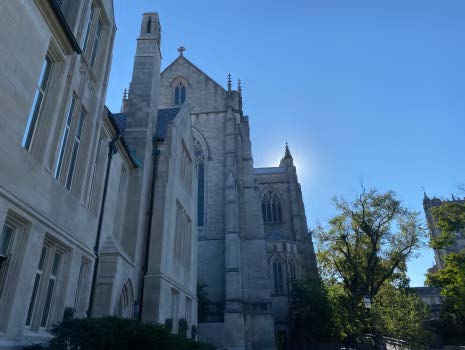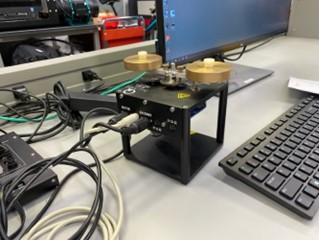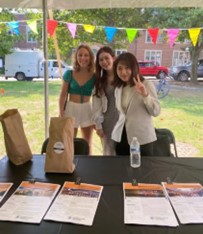by Shiho Sugiyama
<Basic Information>
Program: Exchange Program of the University of Tokyo Home University:the University of Tokyo (UT)
Department at home university: Electronics and Information Engineering Host University:Princeton University (PU)
Department at host university: Electrical and Computer Engineering (ECE)
<Academic Life>
The four courses I’m taking during this fall semester are:
- Machine Learning and Pattern Recognition (ECE)
- Machine Learning for Predictive Data Analytics (ECE)
- Autonomous Control System (MAE, Mechanical and Aerospace Engineering)
- Lightwave Communications (ECE)
The essential difference I have found between the academic style in UT and that in PU is the number of courses to take during a semester. We take 4 courses here in PU, while back in my department in UT, we usually take 20 courses. Here in PU, each course has two or three classes per week. Although the workload is relatively heavy, I find it manageable if you make use of the office hours offered by each course. You can join in a review session, ask specific questions about homework, and discuss the course material with your friends there. Some of these courses are open to both undergraduate students and graduate students, so I can interact with PhD students in these precepts. I think this is an uncommon and important opportunity for an undergraduate student to get to know the students who can be role models of their academic life. I’m happy about having made friends with some PhD students coming from China and India myself.
I’m really surprised to find that so many students in ECE are Asian people. It is often the case that all people in the ECE are Asian. They are mostly Chinese or Indian, and there are almost no Japanese people.
I’m glad about all the courses I take here. Since each course has abundant time to cover the material, it offers various approaches to the same matter, such as lecture on theory and application, discussion, review session, coding assignment, lab work, and problem set, which together give us deep understanding, a working knowledge, and experience.
Basically, instructors welcome questions from students and answer them in class, being flexible with the course schedule.
<Dietary Life>
There are several choices for your dietary plan here; you can either sign up for a meal plan which gives you one meal per day (block 105), three meals per day (unlimited), take part in an eating club, or prepare food for yourself. I signed up for Block 105, and usually eat dinner (sometimes brunch) at whichever dining hall I like. Let me share some of the photos of food here. Each dining hall offers various foods from salad to main entree in a buffet style, and I bet you can find your kind of food. They have gluten-free food, halal food, and vegetarian food, too.




For the other two meals, namely breakfast and lunch in most cases, I have bagels or instant noodles, which I can get at low prices at the Princeton University store. Although you can buy food in this store at relatively low prices, still I think twice before I buy other things because of the weak yen against the dollar these days added to the originally high prices here.


(A pack of pocky costs ¥577 here at present. It is a surprisingly high price when you
compare it to the price in Japan, which is approximately ¥150.)
(You can buy almost everything you need in life in the Princeton University store, in addition
to food; toiletries, stationery, bedding and medicines.)
Sometimes you run into free meals. You can grab pizzas, hamburgers, cupcakes and so on.
They are so generous.
<Housing Life>
Some dorms including mine are old and not very well equipped, while others are brand new, or even under construction. Fortunately, I have my own room now, so I live without any stress regarding housing. All the buildings are beautiful and it is very refreshing to walk around campus. The buildings look pretty especially when it is sunny, or when the sun rises or sets. Since the engineering buildings where I take courses are at a distance from my dorm, I walk about 40 minutes per day. I really enjoy walking around.
Below are a few of the photos I’ve taken so far on campus.








<Climate>
In Autumn, the sunshine is very strong. It is comfortable otherwise thanks to the less humid climate, in comparison to summer in Tokyo. The fall or even winter has come recently in late September, and it discourages me from going outside. I’m afraid how cold it will be in winter.
<Social life>
Exchange students come from Britain, Switzerland, France. Some of us get together in our free time, going to the gym, theater and festivals. I went to the art museum of PU with some of them. It was fun discussing the interpretation of artworks with them and the museum guide.


I got together with Japanese students or those who have some roots in Japan. The other day I visited the dorm room of one of them with some friends from this community and we talked about careers and graduate schools for hours. It was very informative.
I’ve also made friends with students here. My roommate and I went to a welcome event of the Society of Women Engineers, played bingo for ice-breaking, and enjoyed talking with the friends we met there even after the event was over.


(Right: Lunch with students taking a course on the Japanese Language. We talked about a
workshop of cooking Japanese food.)
<Club Activity>
I joined Princeton Robots Club. Although I couldn’t take the course of Introduction to Robotics, which I had planned to, because the course was already closed when we exchange students could apply for them, joining this club will make up for this loss, or give me even greater experience. I belong to the communication subteam which is in charge of controlling and organizing the networking system. I am really glad that the members of this club are kind and welcoming.
<Events>
The international center at Princeton University hosted a study abroad fair in September. I joined it as an exchange student and talked with students at PU who are interested in studying abroad. My fellow exchange student from Japan and I talked about life in UT. We also got the chance to say hello and express gratitude to Professor Yaguchi, who are organizing international programs at UT.
I went to the Future Career Planning and Graduate School Application Process event, in order to get some idea of what career and academic life planning is like here in PU. It seems that the portal sites for internships and career opportunities specialized for PU students are well organized. After this event, career choice and graduate school application started to seem more familiar to me. I haven’t heard of life-work balance or planning career paths considering childbirth and childcare yet since I came here, so I think I’ll try to get a chance to hear about it, because it is one of the things I wanted to figure out here in the U.S.


<Discoveries>
- I was surprised at the way people here react in conversations. They often say ‘cool’ or ‘awesome’ whenever the other person says something, although I would have just nodded or said ‘I see’. I think this behavior is very important for facilitating communication because it makes the speaker feel somewhat better.
- Sanitary pads are available in most restrooms, sometimes for free, in PU. This little offer makes female life much more comfortable. I hope this will be introduced more widely in Japan.
<Future plans>
- Pumpkin picking with international students in the nearby farm
- Midterm
- Visiting UT office and Daikin office in NY during fall recess
- Princeton Hackathon
- Japanese food workshop
- Go to Yale University to see my friend there
- Pacbot Competition at Harvard University
Last but not least, thank you very much for your financial support. I owe a lot to FUTI.







